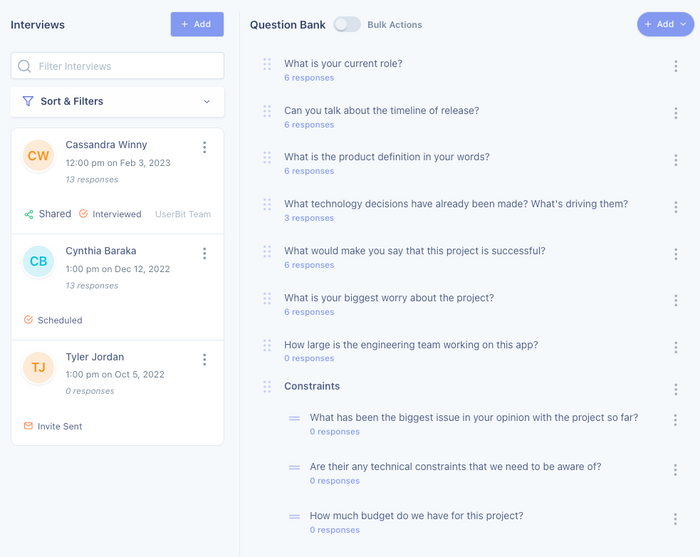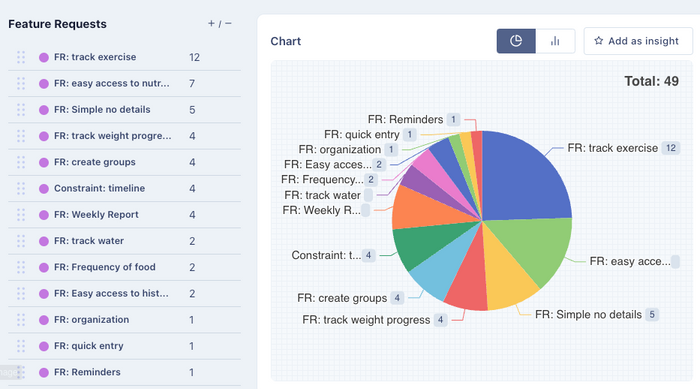
Why UX Freelancers Should Start the UX Process with Stakeholder Interviews
My days as a UX consultant gave me the opportunity to work with companies and teams of all shapes and sizes. Some clients tasked me with establishing and leading a process on my own, while others asked me to work as part of a large team.
Although these roles were as diverse as the places that offered them to me, there were some observable themes common across them. I want to talk about one of these themes: the tendency for people to skip stakeholder interviews and immediately move straight into user interviews, and why it presents a significant hiccup in the UX process.
1. Problem
The temptation to jump-start a research project without initiating stakeholder interviews with the client first is unfortunately all too common.
Why is this a problem? Armed with the cursory client brief, many UX pros think they can form the problem statement by talking to the users. What tends to actually happen?
Without predetermined constraints and goals, user interview questions end up going in scattered directions and the resulting responses are too broad to come up with anything actionable.
To truly benefit from user feedback, we first need a solid understanding of the broader context and goals, which is best achieved through gathering data and information that'll directly inform and benefit the project’s objectives.
2. Solution
Do you know what solution will work best? Begin with stakeholder interviews and take them seriously.
But I’m working closely with a contact at the client’s company. I can just get the initial requirements from them in a quick chat!
False! Your stakeholders aren't just that one contact. It’s everyone that’ll be involved in bringing the project to fruition. They can include the client’s technical team and potentially key figures within your client’s company (such as their customer service managers, sales representatives, or even the marketing team).
But you just said that when you go to an interview with no goals, you end up with really broad, un-actionable responses and now you’re telling me to jump headfirst into stakeholder interviews. What are the goals here?
First, nice comprehension skills. You’re absolutely right!
Coming up with goals for stakeholder interviews though, is somewhat straightforward because unlike user interviews, they’re usually the same.
You need to get an understanding of the following questions for your stakeholders:
- What’s the requested feature/product/enhancement?
- What’s the expected timeline in your mind vs your stakeholders' minds? Are they aligned?
- Who are the intended users for the feature/product?
- What are the constraints or worries that exist regarding this effort?
While the broad goals are the same, your questions might be different depending on who you’re talking to.
For example, you might discuss technical limitations with your client’s technical team, while your client’s customer service team might be able to tell you about the most frequent preferences or complaints from their end-users.
If you need help, UserBit lets you manage your stakeholders and provides default questions that you can use as a starting point.

3. Synthesis
Great, you’ve collected all these responses. Now what? Before you do anything else, you need to make sure there’s a consensus amongst the stakeholders and your team.
Here are a few things that you and your stakeholders should have a common understanding of before proceeding:
- Product or feature definition
- Timeline
- Constraints
- Primary users
- Success metrics
- Key contributors to the project
How do you go about summarizing it? If the number of stakeholders is low (2–3,) you could just extract your findings manually.
If the number is large though, I recommend using methods like frequency or correlation analysis to extract out common themes and conflicting assumptions. These are analytics that help you visually sift through large amounts of data or ideas so you can identify patterns or commonalities.

If you need a helping hand with organizing and analyzing interview data, UserBit offers features that categorize responses and discover hidden patterns, which can simplify the process of analyzing large data sets quickly — and be especially valuable when managing multiple projects or clients.
4. Profit!
I want to move onto what’s arguably the most exciting part for most of us - the benefits of conducting thorough stakeholder itnerviews.
Make stakeholders part owners of the design process
The most important benefit of this phase is making stakeholders feel like they share ownership of the design process.
I can guarantee that very few people have gone to your client’s technical advisor and asked something like “What’s your biggest worry about this project?”
Also, your clients may not always have a formalized process for UX design, so talking to them is a good way to get that process started.
This kind of interaction not only gives you good data on constraints but also gives your stakeholders a chance to think about the project holistically.
Moreover, you get buy-in from these stakeholders who’d more often than not, want to be involved in the design process out of curiosity about what you did with their feedback.
Get everyone on the same page
Needless to say, not uncovering conflicts in stakeholder assumptions and expectations will result in several issues down the line.
I’m assuming you often deal directly with decision-makers, like small business owners or individual entrepreneurs. It’ll be important to get these folks to understand and agree with the project scope, timeline, and expected outcomes, as misunderstandings in these areas can lead to scope creep or dissatisfaction. 😱
We’ve all been there — for example, a client might think a redesign can be done in a week, whereas you know it requires at least a month for thorough research and implementation.
Develop a strategic approach for each UX process
Coming full circle, stakeholder interviews and synthesis arm your UX process with the right plan to move forward with. A project that’s expected to be done in 3 months would probably afford a much different process than one that’s due in 3 weeks.
Similarly, a project whose success is defined by adoption metrics will have much different user interview questions than one where validation is the primary purpose.
Establish ongoing communication channels throughout the project
Regular updates, meetings, or progress reports can keep stakeholders engaged and informed, fostering a sense of involvement and transparency.
Encouraging feedback and collaboration can lead to iterative improvements and ultimately a product that better meets the needs and expectations of all parties involved.
For instance, UserBit’s Client Portal is a great way to make an unlimited number of stakeholders, part of your process — without introducing a new learning curve.
Having a centralized space where you can publish your research findings will encourage stakeholders to comment, ask questions, and provide feedback directly within the platform, fostering a more iterative and inclusive decision-making process.
In conclusion, stakeholder interviews are vital.
Don’t skip them — however strong the temptation! It doesn’t take that long to talk to a few key stakeholders, but the insight gained is valuable for delivering the best results.


